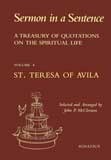Carl E. Olson's Blog, page 126
October 18, 2013
Fasting and the Call to Holiness

Fasting and the Call to Holiness | John B. Buescher | HPR
Our salvation depends wholly on God’s grace, of which we are completely undeserving. But through fasting, as well as through prayer and almsgiving, we can open up space for God’s grace to enter.
The Second Vatican Council’s document, Lumen Gentium, was
issued in 1964. Its section on “The Universal Call to Holiness,” read on
its own, is puzzling because it seems to suggest that lay Catholics had
not realized before that they, too, like the clergy, were called to
holiness. However, I’m trying to imagine who those Catholics were who
didn’t know that they were called to holiness. As far as I can remember,
Catholics well understood that the Church called everyone, everywhere,
to be holy. The section on the Universal Call to Holiness appears in Lumen Gentium’s
longer description of the hierarchical Church, and so should be read as
an effort to emphasize that the laity, too, are called to pursue
holiness as an explicit part of their vocation.
The document’s explanation of what this call to holiness for the
laity entails, practically speaking, is sketchy. The main “new” practice
that has resulted from it has been the encouragement in some quarters
for the laity to pray the Liturgy of the Hours. We are also encouraged
to attend daily Mass, and to receive Communion frequently. In this, the
laity are to take up more seriously one of the three, long-established
spiritual practices—prayer—the other two being fasting and almsgiving.
It seems doubly confusing and disconcerting that the 1964 “call to
holiness” was quickly followed in February 1966 by a revision of
Catholics’ fasting rules (in Pope Paul VI’s Apostolic Constitution, that
relaxed and, in effect, nearly eliminated the fasting and abstinence
requirements altogether.)
(See: http://www.vatican.va/holy_father/paul_vi/apost_constitutions/documents/ hf_p-vi_apc_19660217_paenitemini_en.html>Paenitemini
and in the USCCB’s: http://www.usccb.org/prayer-and-worship/liturgical-resources/lent/us-bishops-pastoral-statement-on-penance-and-abstinence.cfm Pastoral Statement on Penance and Abstinence).
To get some perspective on how lax today’s requirements are, compared
to previous times, take a look at this description of the fasting and
abstinence rules in effect in Britain in 1828, from Thomas Ignatius M.
Forster, Circle of the Seasons, and Perpetual Key to the Calendar and
Almanac:
Steve Ray blog and video: On Ferry from Italy to Patras Greece
From Steve Ray's website, Catholic-Convert.com, posted yesterday:
We
started out the day with a wonderful Mass at Lanciano where a
Eucharistic miracle happened in the 700s. We toured the museum with all
the scientific evidence people enjoyed the gift shop.
Then we were off to the port. It wasn’t a long drive but it was beautiful through the gorgeous landscape of Italy.
We had conversion stories told on the buses along the way. I told
mine on both buses and Mark Brumley shared his as well as Fr. Mark Mary
who told his vocation story.
We arrived at the dock at Ancona Italy and boarded our beautiful ferry. Everyone was surprised how nice the ferry was.
All is beautiful going along Italian coastline and into Greek
Islands. We had an hour meeting to explain procedures and also a mini
“seminar at sea”. We talked about the Battle of Lepanto between the
Christians and the Muslims because will be landing in Patras Greece
tomorrow where the battle took place.
By the way, Patras has the bones of the Apostle St. Andrew, brother
of St. Peter. And it was here that the Catholic armies won the Battle of
Lepanto against the Muslims by the power of the Rosary. If they had
lost, you would all be speaking Arabic today!
Moderate Muslim Myopia
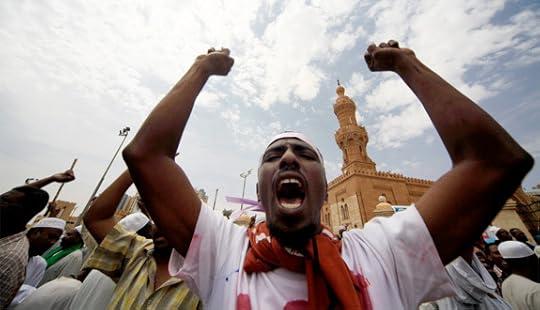
Moderate Muslim Myopia | William Kilpatrick | CWR
Why the Western strategy of
enlisting moderate Muslims against radical Muslims isn't going well.
Here’s a question to test your
knowledge of Islam. The Muslim calendar is dated from:
a) the birth of Muhammad
b) the first revelation to Muhammad
c) the immigration of Muslims to
Medina from Mecca
d) the death of Muhammad
The correct answer is “c.” This may
come as a surprise to many Westerners, who might assume that the
birth of a religion’s founder or his first message from God would
be the most significant dates. But Muslims don’t view events
through Western eyes. The fact is, Islam was a relatively
unsuccessful religion during the first twelve years of Muhammad’s
ministry—that is, the first twelve years after the initial
revelation in 610 A.D. During that period, Muhammad never had more
than one hundred followers at one time. It was only after the move to
Medina and the commencement of raiding, looting, and warfare that
Islam began to attract sufficient followers to force the submission
of the unbelievers in Arabia.
In a
recent article for Gatestone Institute,
Salim Mansur, a professor of political science at Western University
in Ontario, draws a distinction between Islam the religion and
“Islamism,” which he describes as a totalitarian ideology
“masquerading as a religion.” Along with other moderate Muslims,
Mansur holds out the hope that Muslim societies can reform themselves
if they embrace the “faith-tradition” of Islam and reject the
“aberrant strain” of Islamism. Finally, he calls on the West to
come to the aid of anti-Islamist Muslims in their struggle against
the “perversion” of political Islam.
But, in fact, the strategy outlined by
Mansur has been in place ever since 9/11. Since that time, Western
leaders and strategists have devoted a great deal of energy to
enlisting moderate Muslims against radical Muslims. The problem is,
the strategy hasn’t worked. The Muslim world is even more
radicalized now than it was in 2001. The drawback of the approach is
that the task of separating religious Islam from political,
supremacist Islam is difficult, if not impossible. The two sides of
Islam are inextricably linked both textually and historically.
One reason—perhaps the main
reason—the Islamists have been able to convince otherwise peaceful
Muslims that militant Islam is the authentic Islam is that they have
the facts on their side.
October 17, 2013
St. Ignatius of Antioch and the Early Church

St. Ignatius of Antioch and the Early Church | Kenneth D. Whitehead | From
One, Holy, Catholic, and Apostolic:
The Early Church Was The Catholic Church
Sometime around the year 107 A.D., a short, sharp persecution of the
Church of Christ resulted in the arrest of the
bishop of Antioch in Syria. His name was Ignatius. According to one of
the harsh penal practices of the Roman Empire
of the day, the good bishop was condemned to be delivered
up to wild beasts in the arena in the capital city. The insatiable
public appetite for bloody spectacles meant a chronically short supply
of victims; prisoners were thus sent off to
Rome to help fill the need.
So the second bishop of Antioch was sent to Rome as a
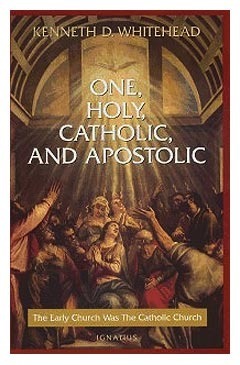
condemned prisoner. According to Church historian Eusebius (ca. 260-ca. 340), Ignatius had been bishop in Antioch
for nearly forty years at the time of his arrest. This means
that he had been bishop there while some of the original
apostles were almost certainly still alive and preaching.
St. Ignatius of Antioch was conducted first by land from
Syria across Asia Minor (modern Turkey). He was escorted
by a detachment of Roman soldiers. In a letter he sent ahead
to the Church of Christ in Rome, this bishop described his
ardent wish to imitate the passion of Christ through his own
coming martyrdom in the Roman Colosseum. He warned
the Christians in Rome not to try to save him. He also spoke of his conflicts with his military escort and of their casual
cruelties, describing his guards as "ten leopards". The discipline of the march cannot have been unrelieved, however,
since Ignatius was permitted to receive delegations of visitors from local Churches in the cities of Asia Minor through
which the escorts and Ignatius passed along the way (To the
Romans, 5:1).
In Smyrna (modern Izmir), St. Ignatius met, not only with
the bishop of that city, St. Polycarp, but also with delegations from
the neighboring cities of Ephesus, Magnesia, and
Tralles. Each delegation was headed by a local bishop. Ignatius wrote
thank-you letters to the Christians in each of these
cities who had visited the notable but shackled bishop-prisoner. Chiefly
through these letters, St. Ignatius of Antioch is known to us today.
Establishing these letters, written in Greek, as authentic
and genuinely from the first decade of the second century
was one of the triumphs of nineteenth-century British scholarship. Without them, this bishop of Antioch might have
remained no more than a name, as obscure as many another
early Christian bishop.
Escorted on to the Greek city of Troas on the Aegean Sea,
Ignatius wrote yet another letter to the Church at Smyrna,
through which he had passed. He also wrote personally to
Bishop Polycarp of that city. Finally, from Troas he wrote
still another letter to the Philadelphians; the local Church of
Philadelphia had despatched two deacons who overtook his
party at Troas.
Shortly after writing these seven letters to Churches in
Asia Minor, St. Ignatius of Antioch was taken aboard ship.
The remainder of his journey to Italy was by sea. Tradition
holds that he won his longed-for martyrdom in the Roman
amphitheater during the reign of Emperor Trajan (98-117).
But the letters he left behind afford us a precious and remarkable picture of what that Church was like not even two
full generations after issuing from the side of Jesus Christ on
the Cross.
The adult life of St. Ignatius of Antioch as a second-generation Church leader almost exactly spanned the period
of transition between the end of the first Christian generation and the beginning of the third. Thus, his witness about
the nature of the Church of his day is of the most profound
and fundamental importance.
What was the Church like around the year 107 A.D.? The
Church had already spread far and wide since the days of the
apostles. St. Ignatius was conducted over a good part of what,
today, is Turkey, encountering local Churches in most major
towns. At the head of each of these Churches was a principal
leader, a bishop. The geographical spread of individual local
Churches, each headed by a bishop, is obvious from the fact
that Ignatius was met by delegations headed by bishops from
each sizeable town along the route.
That St. Ignatius was met by these "official" delegations
indicates that local Churches were in close touch with one
another. They did not see themselves as independent, self-selected,
self-governing congregations of like-minded people; they saw themselves
as linked together in the one body
of Christ according to an already firmly established, well-understood
system, even though they happened to be geographically separated.
The solidarity with which they all turned out to honor a prisoner being led to martyrdom, who also happened to be the
bishop of Antioch, tells us something about their respect for
the incumbent of that office. Antioch was to become one of
the great patriarchal bishoprics of the Church of antiquity, along
with Alexandria and Rome--and, later, Constantinople.







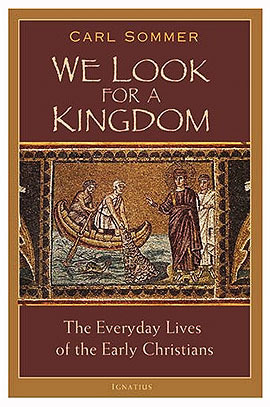
[image error]

The letters of St. Ignatius are even more pointed concerning the role that a bishop ("overseer") held in the early
Church. The modern reader may be startled at the degree to
which these letters exalt the role of the bishop. "It is essential to act in no way without the bishop", Ignatius wrote to
the Trallians. "... Obey the bishop as if he were Jesus Christ"
(2:2,1). "Do nothing apart from the bishop", he wrote to
the Philadelphians (7:2). To the Smyrnaeans, he gave the same
advice: "You should all follow the bishop as Jesus Christ did
the Father .... Nobody must do anything that has to do with
the Church without the bishop's approval" (8:1).
The New Testament shows the apostles appointing others
besides themselves to offices in the Church. Peter and the
other apostles at Jerusalem very quickly decided to appoint
deacons to assist them (cf. Acts 6: 1-6). Paul similarly placed
someone in authority in the Churches he founded (cf. Acts
14:23; 2 Tim 1:6). These ecclesiastical appointments were
carried out by means of a religious rite: the laying on of
hands, either by those who already had authority conferred
on them by Christ (the apostles) or those on whom they had
conferred authority by the laying on of hands. These rites
were sacramental ordinations.
For a period of time in the early Church there seems to
have been no entirely clear terminology designating these
ordained Church officers or ministers. St. Paul spoke of bishops and deacons (Phil 1:1), though he also mentions other
offices, such as apostles, prophets, and teachers (1 Cor 12:29).
St. James spoke of elders (5:14). In the Acts of the Apostles
(e.g., 11: 30), we hear many times of elders or presbyters. Sometimes the designations bishop and elder seem to have been
used interchangeably.
In the course of the second half of the first century, however, a
consistent terminology for these Church offices was becoming fixed. The
letters of St. Ignatius of Antioch make
clear that leadership in the Christian community, in all the
Churches, is exercised by an order of "bishops, presbyters,
and deacons" (To the Trallians 3:2; To Polycarp 6:1). Of these
designations, bishop comes from the Greek episkopos, meaning "overseer"; presbyter from the Greek presbyteros, "elder";
and deacon from the Greek diakonos, "servant" or "minister".
Thus, from that time on, these were the offices in what
was already an institutional, hierarchical Church (this is not
to imply that the Church was ever anything but institutional
and hierarchical, only that the evidence for these characteristics had become unmistakably clear by this time).
By the way, the term priest (Greek: hierus) does not seem
to have been used at first for the Christian presbyter; the
nonuse of this particular term in the earliest years of the
Church was due to the need to distinguish the Christian
priesthood of the new dispensation from the Jewish Temple
priests, who were still functioning up to the time of the destruction of Jerusalem and the Temple by the Romans in the
year 70 A.D. After that time, the use of the word priest for
those ordained in Christ began to be more and more common.
St. Ignatius of Antioch did not know of any such thing as
a "Church" that was merely an assemblage of like-minded
people who believed themselves to have been moved by the
Spirit. The early Christians were moved by the Spirit to join
the Church, the established visible, institutional, sacerdotal,
and hierarchical Church-the only kind St. Ignatius of Antioch would ever have recognized as the Church.
And it was for this visible, institutional, sacerdotal, and
hierarchical Church--an entity purveying both the word and
sacraments of Jesus--that this early bishop was willing to give
himself up to be torn apart by wild beasts in the arena. He
wrote to St. Polycarp words that were also meant for the latter's flock in Smyrna: "Pay attention to the bishop so that
God will pay attention to you. I give my life as a sacrifice
(poor as it is) for those who are obedient to the bishop, the
presbyters, and the deacons" (6:1). To the Trallians he wrote:
"You cannot have a Church without these" (3:2).
St. Ignatius certainly did not fail to recognize that, in one
of today's popular but imprecise formulations, "the people
are the Church." His letters were intended to teach, admonish, exhort,
and encourage none other than "the people".
But he also understood that each one of "the people" entered the Church
through a sacred rite of baptism, and thereafter belonged to a group in
which the bishop, in certain
respects and for certain purposes, resembled, on the one hand,
the father of a family and, on the other, a monarch--more
than some democratically elected leaders.
Related IgnatiusInsight.com Articles, Book Excerpts, and Interviews:
• Selections from Jesus, The Apostles, and the
Early Church | Pope Benedict XVI
• A Short Guide to Ancient Heresies | Kenneth D. Whitehead
• Studying The Early Christians: The Introduction to We Look For
the Kingdom | Carl J. Sommer
• The Everyday Lives of the Early Christians | An interview with Carl J. Sommer
• Church and State in Early Christianity | Hugo Rahner, S.J.
• His Story and the History of the Church | An Interview with Dr. Glenn W. Olsen
• Are We at The End or The Beginning? | Dr. Glenn Olson
• Who Is A Priest? | Fr. Benedict Ashley, O.P.
• The Church Is the Goal of All Things | Christoph Cardinal Schönborn
• St. Peter and the Primacy of Rome | Stephen K. Ray
• Church Authority and the Petrine Element | Hans Urs von Balthasar
Kenneth D. Whitehead is a former U.S. Assistant Secretary of Education.
He has authored or coauthored several books, as well as many articles for
leading Catholic periodicals, and is the translator of some twenty published
books.
Toward a More Human State of Economics
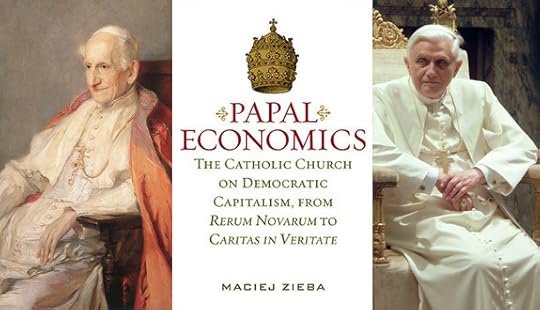
Toward a More Human State
of Economics |
Br. Gabriel Torretta, OP | Catholic World Report
Maciej Zięba's book,
Papal Economics
, offers the right questions (and
some good answers) about Catholic social thought
When Pope Francis was first
elected on March 13 of this year, some of the early media reports
about the largely unknown Argentine cardinal painted a dire portrait
of a man with shadowy connections to a military dictatorship, a man
whom rumor described as conspicuously silent during the
government-sponsored murder of priests preaching liberation theology.
But in recent days, in the wake of the compelling interviews with
America and La Reppublica, many of these same voices
have discovered a new Pope Francis, one who is tolerant, open-minded,
anti-establishment, and perhaps even supportive of some forms of the
liberation theology he was once accused of persecuting.
Readers of papal encyclicals
on politics and economics, broadly called Catholic social thought,
often walk away with a similarly double image: commentators on John
XXIII’s Mater et Magistra, John Paul II’s Centesimus
Annus, and Benedict XVI’s Caritas in Veritate have
claimed and counter-claimed each document as a certain and final
victory for democratic capitalism or state-run socialism, depending
on the commentator’s predilections.
Asking the Right
Questions
All too often, questions
about the Church’s politics end up like the trompe-l’oeil
images that vex freshman philosophy students. Is it a duck or a
rabbit? An old lady or a young girl? Is Pope Francis a fascist or a
Marxist? Is Catholic social thought capitalist or socialist? Is it
all in the eye of the beholder?
These questions do not have
a satisfying answer because they are the wrong questions.
October 16, 2013
The Arts—Agents of Change and Source of Enchantment
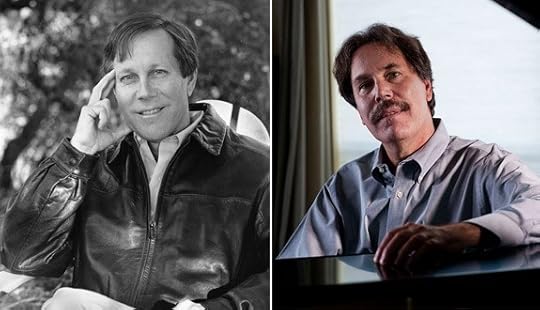
The Arts—Agents of Change and Source of Enchantment | Carl E. Olson | CWR
Dana and Ted Gioia discuss literature, music, education, business, culture, and the Catholic Faith.
Dana
and Ted Gioia (pronounced JOY-uh) are authors,
musicians, composers, critics, educators, and businessmen. They are also
brothers, born and raised in Hawthorne, California, in an Italian-Mexican,
Catholic family. Although both have been interviewed numerous times over the
years, this marks the first time they have been interviewed together, answering
the same questions.
Dana
Gioia (www.DanaGioia.net),
the eldest, is an internationally acclaimed and
award-winning poet, and the former Chairman of the National Endowment for the
Arts. He received a BA and an MBA from Stanford University and an M.A. in
Comparative Literature from Harvard University. He has published four
full-length collections of poetry (and several shorter collections), and the
collection Interrogations at Noon won the 2002 American Book Award. His poetry has also appeared in
numerous anthologies. His 1991 book, Can
Poetry Matter?, was a finalist for the National Book Critics
Circle award. His poems, translations, essays, and reviews have appeared in
many magazines, including The New Yorker, The Atlantic, The Washington Post Book World, The New York Times Book
Review, Slate, and The Hudson Review. Dana has written three opera libretti
and is an active translator of poetry from Latin, Italian, and German. Renominated
in November 2006 for a second term and once again unanimously confirmed by the
US Senate, he was the ninth Chairman of the National Endowment for the Arts. He
left his position as Chairman in 2009, and in 2011 he became the Judge Widney
Professor of Poetry and Public Culture at the University of Southern California,
where he teaches each fall semester. He is also a member of the College of
Fellows at the Dominican School of Philosophy and Theology (Berkeley). Dana has
been the recipient of ten honorary degrees and has won numerous awards,
including the 2010 Laetare Medal from Notre Dame. He and his wife, Mary, have
two sons, and he divides his time between Los Angeles and Sonoma County,
California.
Ted Gioia (www.TedGioia.com), seven years younger than Dana, has published eight non-fiction
books, most recently the bestselling The Jazz
Standards: A Guide to the Repertoire. His book The History of Jazz was selected as one of the twenty best books of the year in 1997
by Jonathan Yardley in The Washington
Post, and was chosen as a notable book of the year in The New York Times. His 2008 book Delta Blues was also selected by The New York Times as one of the 100 most notable of the year, and
was picked as one of the best books of the year by The Economist. In 2006, Ted published two books simultaneously, Work Songs and Healing Songs, and both were honored with a special ASCAP-Deems
Taylor Award. His 2009 book, The Birth
(and the Death) of Cool, was a work of cultural criticism and a historical
survey of hipness, and his concept of post-cool,
outlined in this work, was highlighted as one of the “ideas of the year” by Adbusters. Ted’s writings have appeared
in The New York Times, the Los Angeles Times, Salon, American Scholar, Hudson Review, and the San Francisco Chronicle, among other
publications. Ted received a degree in English at Stanford (graduating with
honors and distinction), served as editor of Stanford’s literary magazine, Sequoia. He also worked extensively as a
jazz pianist during that time, and designed and taught a class on jazz at
Stanford while still an undergraduate. After graduation, Gioia received a
degree in philosophy, politics, and economics at Oxford University, where he
graduated with first class honors. He then received an MBA from Stanford
University. Ted has also consulted to Fortune 500 companies, and has undertaken
business projects in numerous countries on five continents. In the 1980s he
established a formal jazz studies program at Stanford, and served on the
faculty alongside artist-in-residence Stan Getz for several years. His first
book, The Imperfect Art, published in 1988, was
awarded the ASCAP-Deems Taylor award and was named a “Jazz Book of the Century”
by Jazz Educators Journal. Ted has
recorded several jazz albums, including The End of the Open Road, Tango Cool, and The City is a Chinese Vase.
Carl E. Olson, editor of CWR, interviewed Dana and Ted over the
past couple of months, asking each the same questions about their childhood,
their faith, literature and music, education, American culture, and the role of
the Church in supporting the arts.
CWR: Is it accurate to say
that two influences profoundly shaped your childhood years: your family’s
Catholic faith and your uncle, Ted, who died before you had a chance to know
him? What role did each play in your intellectual and cultural formation? What
other influences are noteworthy?
An Interview with novelist Dorothy Cummings McLean
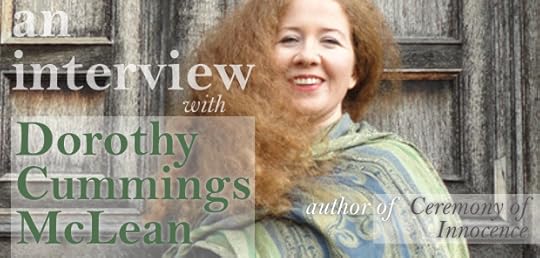
by John Herried | IPNovels.com
We sit down with the author of the new Ignatius novel Ceremony of Innocence, Dorothy Cummings McLean. A Canadian writer living abroad, she has been a regular contributor to The Catholic Register (Toronto). Her first book, Seraphic Singles, is a popular work of nonfiction. Until Wednesday, Ceremony of Innocence is also featured in our novel sale.
Ceremony of Innocence owes a debt to Graham Greene’s The Quiet American. Did Greene’s novel inspire you to write yours?
My novel is both a tribute and a parody to Greene’s novel. It’s a
tribute to Greene’s amazing gifts as a storyteller and a parody of
“Greeneland” in that it turns various elements of The Quiet American on their heads.
You have lived in Europe for many years. How have your experiences informed the story?
I didn’t move to Europe until after I had written the novel. However,
the themes and setting of the novel spring from the summer I studied in
Germany. I spent most of my time in Frankfurt-am-Main. I loved this
city. It was energetic, cosmopolitan, and strangely beautiful. While I
was writing, I would trace my characters’ peregrinations along a
Frankfurt city map.
It was a lucky summer to be in Frankfurt because Germany was hosting
the FIFA World Cup, and the German team exceeded all expectations.
Suddenly it was as if the Germans had decided to be proud of Germany.
Normally the Germans around me, even 22-year-old seminarians, acted as
if Germany had the mark of Cain on its collective forehead. They
complained about Germany endlessly, but heaven help you if you agreed. I
was careful never to mention the last war—but they all did. My German
friends call the Hitler years the national trauma.
The summer was lucky in other ways. While I was there, news broke
that a gang of young Islamists had been arrested for planning terrorist
attacks in my hometown of Toronto. I was beside myself with rage but
also deeply thankful no one had been hurt. And a month later, news broke
that two young Islamists had been arrested for planting bombs on trains
leaving Cologne. The bombs had been left two days after I had visited
Cologne—by train. They were foreign students and, as a fellow foreign
student, I was disgusted.
In Joseph Ratzinger’s (Pope Emeritus Benedict XVI) book A Turning Point for Europe?
he declares that the term “fundamentalist”, primarily associated with
American Protestantism, does not really apply to current Islamist
radicals, instead pointing to a fusion of Marxist and Islamic theories
of liberation as being the undercurrent driving Islamist terrorism. So,
despite being used as a weapon against the West, this form of terrorism
has some roots in Western ideologies. Does this attraction to a kind of
Marxist “liberation” play a part in the plot? Does it explain why a
Westerner might be attracted to Islamist radicalism?
I think Westerners are attracted to Islamist radicalism because, to
be blunt, they think it is sexy. It is strong, it is well-funded, it is
exotic, and it claims to fight for the underdog. It also aligns itself
with the religion of Islam, which is itself culturally strong and,
thanks to the jaded Western palate, appeals to Orientalist sexual
fantasies of masculine domination and feminine submission.
By contrast, Western culture divorced from Christianity and its own
past is pallid, shallow, consumerist, and even distasteful, and that is
the culture most Westerners of the post-Vatican II, post–mainstream
Protestant era have grown up in. Unfortunately, millions of Europeans
and Americans have been indoctrinated by the culture to believe that the
Christianity of their ancestors is uncool and therefore bad. The
victory of the counter-culture has also given rise to North America’s
fratricidal culture wars and, where Islamism is concerned, “the enemy of
my enemy is my friend.”
I am certainly concerned by what Western teenagers, especially in the
English-speaking world, are taught about their ancestors and the
histories of their countries or, rather, what effect it has on the
teenagers. If the teenagers feel inspired to make their countries better
places to live, good. If the teenagers despair and think Al Qaeda is
justified, bad.
Meanwhile, I am very concerned about idealistic teenagers being
sucked into causes by manipulative adults, no matter what the cause.
Despite the serious nature of the issues explored in Ceremony of Innocence, there is also a great deal of humor—much of it laced with irony. How does humor assist in storytelling?
October 15, 2013
St. Teresa of Avila, "a woman extraordinarily gifted, both naturally and supernaturally."
A couple of excerpts from 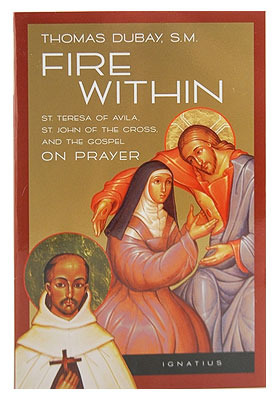 Fire Within: St. Teresa of Avila, St. John of the Cross, and the Gospel--On Prayer, the late Fr. Dubay's outstanding study on prayer:
Fire Within: St. Teresa of Avila, St. John of the Cross, and the Gospel--On Prayer, the late Fr. Dubay's outstanding study on prayer:
By all accounts, St. Teresa, the
foundress from Avila, was a woman extraordinarily gifted, both naturally
and supernaturally. In her were combined physical beauty, especially in
her youth, and a charm of personality that neither illness nor age
diminished. All witnesses seem to agree that she was the type of woman
no one can adequately describe in a few pages. She was one of those rare
personalities who combine qualities that seem to exclude one another
and are seldom found together in one individual. She loved tenderly and
affectionately, yet would brook no nonsense from anyone. She possessed
both a strong self-image and an astonishing humility. A born leader, she
was yet completely obedient to her superiors. She could be a windmill
of activity at one time and at another be lost in mystical
contemplation. Though she was highly intelligent and amazingly
efficient, she gravitated toward simple, humble men and women. (pp.
14-15)
Regarding a woman of prayer and penance
who came to visit her, Teresa remarks that "she was so far ahead of me
in serving the Lord that I was ashamed to stand in her presence", and
she says of the nuns with whom she lived in her first reformed convent
that "this house was a paradise of delight for Him. ... I live in their
company very, very much ashamed." She was of the opinion that she
deserved to be persecuted, and she welcomed even untrue accusations
against herself. Foundress though she was, Teresa must have been known
widly for choosing to do menial tasks, for that trait comes up more than
once in the depositions of her process.
In the very nature of things there is an
intimate connection between humility and obedience, and while I am
omitting in this sketch many of St. Teresa's heroic virtues, I feel that
the latter should be joined to the former. To appreciate both of these
virtues in her, we need to recall that she was anything but a timid,
passive individual. Diffident people often do not find it difficult to
acquiesce to another's decisions either because they are reluctant to
assume responsibility for important decisions or because they fear
failure and criticism. But as we have noted, Teresa was of an entirely
cast of mind: she was full of ideas and abounding in initiative and
determination. Criticism bothered her not in the least. Being a born
leader, she must have found submitting to another's will naturally
irksome. Yet her obedience was legendary. We cannot here detail the many
examples of the prompt, joyful carrying out of difficult directions
that she must have found extremely painful to her buoyant determination.
What she taught, she lived. (p. 27)
And here are some quotes from St. Teresa of Avila (1515-1582), the great
Carmelite contemplative, mystic, Saint, and Doctor of the Church, whose
feast is celebrated today:
• "There is no stage of prayer so sublime that it isn't
necessary to return often to the beginning. Along this path of prayer,
self knowledge and the thought of one's sins is the bread with which
all palates must be fed no matter how delicate they may be; they cannot
be sustained without this bread."
• "It is a dangerous thing to be satisfied with ourselves."
• "Do not be negligent about showing gratitude."
• "Those who in fact risk all for God will find that they have both lost all and gained all."
•
"We shouldn't care at all about not having devotion—as I have said—but
we ought to thank the Lord who allows us to be desirous of pleasing
Him, even though our works may be weak. This method of keeping Christ
present with us is beneficial in all stages and is a very safe means of
advancing."
• "Everything other than pleasing God is nothing."
• "Our security lies in obedience and refusal to deviate from God's law."
•
"Once you are placed in so high a degree as to desire to commune in
solitude with God and abandon the pastimes of the world, the most has
been done."
• "Teach by works more than by words. ... We must all try to be preachers through our deeds."
•
"Mental prayer in my opinion is nothing else than an intimate sharing
between friends; it means taking time frequently to be alone with Him
who we know loves us. In order than love be true and friendship endure,
the wills of the friends must be in accord."
• "I don't know why
we are amazed that there are so many evils in the Church since those
who are to be the models from which all might copy the virtues are so
obscurely fashioned that the spirit of the saints of the past has
abandoned the religious communities. May it please the divine Majesty to
remedy this as He sees it to be necessary."
• "Now, Lord, now; make the sea calm! May this ship, which is the Church, not always have to journey in a tempest like this."
Those are from the fourth volume of Sermon in a Sentence: A Treasury of Quotations on the Spiritual Life, a series (five, so far) of books featuring quotes from St. Thérèse of Lisieux (vol. 1), St. Francis de Sales (vol. 2), St. Catherine of Siena (vol. 3), and St. Thomas Aquinas (vol. 5). The books are edited and arranged by John P. McClernon, who also writes bios of the saints for each book.
On February 2, 2011, Pope Benedict XVI devoted his General Audience to St. Teresa, saying:
It is far from easy to sum up in a
few words Teresa’s profound and articulate spirituality. I would like
to mention a few essential points. In the first place St Teresa
proposes the evangelical virtues as the basis of all Christian and
human life and in particular, detachment from possessions, that is,
evangelical poverty, and this concerns all of us; love for one another
as an essential element of community and social life; humility as love
for the truth; determination as a fruit of Christian daring;
theological hope, which she describes as the thirst for living water.
Then we should not forget the human virtues: affability, truthfulness,
modesty, courtesy, cheerfulness, culture.
Secondly, St Teresa proposes a profound harmony with the great
biblical figures and eager listening to the word of God. She feels
above all closely in tune with the Bride in the Song of Songs and with
the Apostle Paul, as well as with Christ in the Passion and with Jesus
in the Eucharist. The Saint then stresses how essential prayer is.
Praying, she says, “means being on terms of friendship with God
frequently conversing in secret with him who, we know, loves us” (Vida
8, 5). St Teresa’s idea coincides with Thomas Aquinas’ definition of
theological charity as “amicitia quaedam hominis ad Deum”, a type of
human friendship with God, who offered humanity his friendship first; it
is from God that the initiative comes (cf. Summa Theologiae II-II, 23, 1).
Prayer is life and develops gradually, in pace with the growth of
Christian life: it begins with vocal prayer, passes through
interiorization by means of meditation and recollection, until it
attains the union of love with Christ and with the Holy Trinity.
Obviously, in the development of prayer climbing to the highest steps
does not mean abandoning the previous type of prayer. Rather, it is a
gradual deepening of the relationship with God that envelops the whole
of life.
Rather than a pedagogy Teresa’s is a true “mystagogy” of prayer: she
teaches those who read her works how to pray by praying with them.
Indeed, she often interrupts her account or exposition with a prayerful
outburst.
Here are some of the resources from Ignatius Press relating to St. Teresa of Avila:
• Fire Within: Teresa of Avila, John of the Cross and the Gospel on Prayer, by Fr. Thomas Dubay, S.M.
• Drink of the Stream: Prayers of Carmelites , compiled by Penny Hickey
• Teresa of Avila: Personality and Prayer , a DVD series by Fr. Dubay
• St. Teresa of Avila , an ambitious mini-series shot in Spain
Gripping, debut novel tackles political and social issues at the root of the decline of Europe
SAN FRANCISCO, October 15, 2013 – Riots, terrorist attacks, and neo-Nazi
violence take center stage in the debut novel Ceremony of Innocence by Dorothy Cummings
McClean.
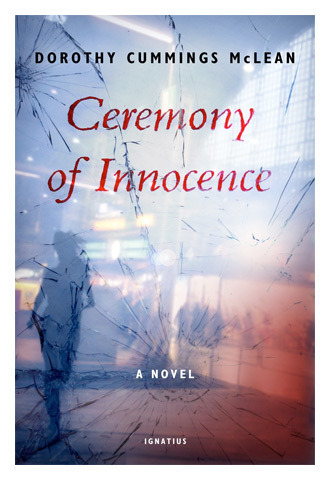
Ceremony of Innocence is set in modern-day Germany, where journalist
Catriona McClelland has seen it all while covering the contemporary European scene for a Catholic
news organization. Keeping herself above the political fray in her professional life, she has also
managed to keep herself from personal entanglements. Things come to a head when her boyfriend
Dennis, frustrated with a lack of commitment, leaves her for Suzy Davis, an idealistic young
Canadian who is involved with a left-wing protest movement. But when Suzy is murdered . . . who is
complicit and who is innocent?
Ripped from the headlines, Ceremony of
Innocence is a very contemporary novel of Europe on the edge of social breakdown. Train stations
are bombed and migrants targeted for violence as journalists and other tastemakers watch from their
positions of privilege.
Dorothy Cummings McLean’s realistic narrative does not describe the
feats of heroes. Rather, it unnervingly lays bare the way religious faith and moral reasoning can be
easily manipulated and compromised.
Piers Paul Read, the author of Alive: The
Story of the Andes Survivors, praises Ceremony of Innocence, saying, “I highly recommend
this enjoyable, interesting and well-written novel that gives rare insight into present-day
Germany.”
Ceremony of Innocence is “[a] true joy to read. In a literary world
increasingly distended with stale predictability, it’s so energizing to read something genuinely
original and vibrant,” says Michael Coren, TV Host and author of Heresy: Ten Lies They
Spread About Christianity.
Richard Greene, Ph.D., Professor of English,
University of Toronto, calls it “[a]n exciting debut novel. It is well-paced, intelligent, and
suspenseful. In the style of Graham Greene, Dorothy Cummings McLean has placed her characters on the
knife-edge between terror and salvation.”
Ceremony of Innocence is “[a] terrifying
voyage into a sinister underworld of political extremism and spiritual confusion. It is replete with
dark secrets, betrayals and above all, damaged young people struggling to find a sense of purpose
amid the moral chaos of near-contemporary Europe. The novel’s stunning climax will leave the reader
reeling with shock,” says Fiorella De Maria, author of Poor Banished Children.
“Dorothy Cummings McLean opens a disturbing window into a parallel world where twenty-first
century Catholics walk the line between the ceremony and the reality of innocence. Amidst hedonism,
Neo-Nazism, banal leftism and militant Islam lurk murder and treachery with only the merest hint of
redemption. Bewildering and exhilarating by turns,” says Alan Fimister, Ph.D., International
Theological Institute.
Stuart Reid, former editor of The Spectator, says Ceremony
of Innocence is “[a] fast-paced thriller in which Terrorist International wages war against
Europe, America and Christian civilization. All human life is here – drugs and degenerate music;
neo-Nazis, enigmatic spooks and terrified Muslim immigrants; bombs, quarrelling lovers and scheming
Eurotrash – and, underpinning everything is sorrow, contrition and hope.”
Dorothy Cummings McLean is a Canadian writer living abroad. She has been a
regular contributor to The Catholic Register (Toronto). Her first book, Seraphic Singles:
How I Learned to Stop Worrying and Love the Single Life, is a popular work of nonfiction.
Dorothy Cummings McLean is available for interviews about this book.
To request a review copy or an
interview with Dorothy Cummings McLean please contact:
Rose Trabbic, Publicist, Ignatius Press
at (239)867-4180 or rose@ignatius.com
Product Facts:
Title: CEREMONY OF INNOCENCE
A Novel
Author: Dorothy Cummings McLean
Release
Date: October 2013
Length: 189 pages
Price: $19.95
ISBN: 978-1-58617-731-7 •
Hardcover
Order: 1-800-651-1531 • www.ignatius.com
Evangelical theologian lauds "Christocentric legacy" of Benedict XVI
by Carl E. Olson | CWR Blog
Although he might not be well known outside of certain theological circles, Dr. Hans Boersma is one of the finer young Evangelical theologians writing today. He is the J.I. Packer Professor of Theology
at Regent College, one of the best Evangelical schools in Canada, and he is the author of some books that engage deeply and thoughtfully with Catholic theology, notably Nouvelle Théologie and Sacramental Ontology: A Return to Mystery (Oxford, 2009), and Heavenly Participation: The Weaving of a Sacramental Tapestry (Eerdmans 2011). As his bio on the Regent website states, Boersma's "main theological interests are Catholic thought, the church fathers, and spiritual interpretation of Scripture." (And in the words of a snide Amazon.com reviewer, he is "A Roman Catholic in evangelical clothing".)
In the September/October 2013 edition of Books & Culture: A Christian Review, in an article titled, "The Real Presence of Hope & Love" (subscription required for full article), Boersma praises the "Christocentric legacy" of Pope Emeritus Benedict XVI and touches on how it should help fruitful ecumenical conversation between Catholics and Evangelicals. He notes that far too many discussions of theology begin with premises about "conversative" and "liberal," which often derail matters before anything of substance is actually discussed. "With regard to Benedict," writes Boersma, "what stands out is not his alleged 'conservatism' but his focus on Christ in matters both theological and moral. That is what will render him relevant for many years to come." He then writes:
Protestants have long been afraid that Catholics take their starting-point in human realties. Human merit before God, Mary and the saints as objects of our adoration, the concrete materiality of Baptism and Eucharist—these, and other aspects of Catholic theology and spirituality, seem to Protestants attempts to place ourselves in the position of the risen Lord, as a move from Christocentrism to anthropocentrism. Oakes' insistence, therefore, that Ratzinger's theology is marked first and foremost by its Christocentrism, should make Protestants sit up and listen. And I think there is a sense in which it should make both Protestants and Catholics sit up and listen. If, after all, [Fr. Edward] Oakes is right that Christocentrism lies at the heart of Ratzinger's thought, then this is the key also to how we can deconstruct the relativism of our culture that thinks only in terms of the binaries of "conservative" and "progressive." To place Christ at the center is to gainsay the need to be "up-to-date" or "relevant." To place Christ at the center is, therefore, also to stab at the heart of the relativism that underlies this division between "conservative" and "progressive." There is good reason, I think, why Ratzinger's most stringent rejection of relativism comes under the title of Dominus Iesus (2000). It is the Lord Jesus who sent us on a mission in the world, and it is his Lordship and the definitive character of his revelation that are " 'the true lodestar' in history for all humanity," as the document's concluding paragraph puts it. Evangelicals and Catholics should be drawn together by this theological—that is to say, Christological—focus, which is the real antidote to so much non-theological humbug that typifies most media interest in Catholic thought and in the Christian faith in general. The insistence that Christ is the beginning, the center, and the end of theology has always served as reminder that in terms of theology and morality there is something more important to worry about than God's relevance to us, namely, our relevance to God.
Beorsma then focuses on Benedict's first two encyclicals—Deus caritas est (2005) and Spe salvi (2007)—highlighting "Benedict's insistence that the love of God has become incarnate:
Carl E. Olson's Blog
- Carl E. Olson's profile
- 20 followers


